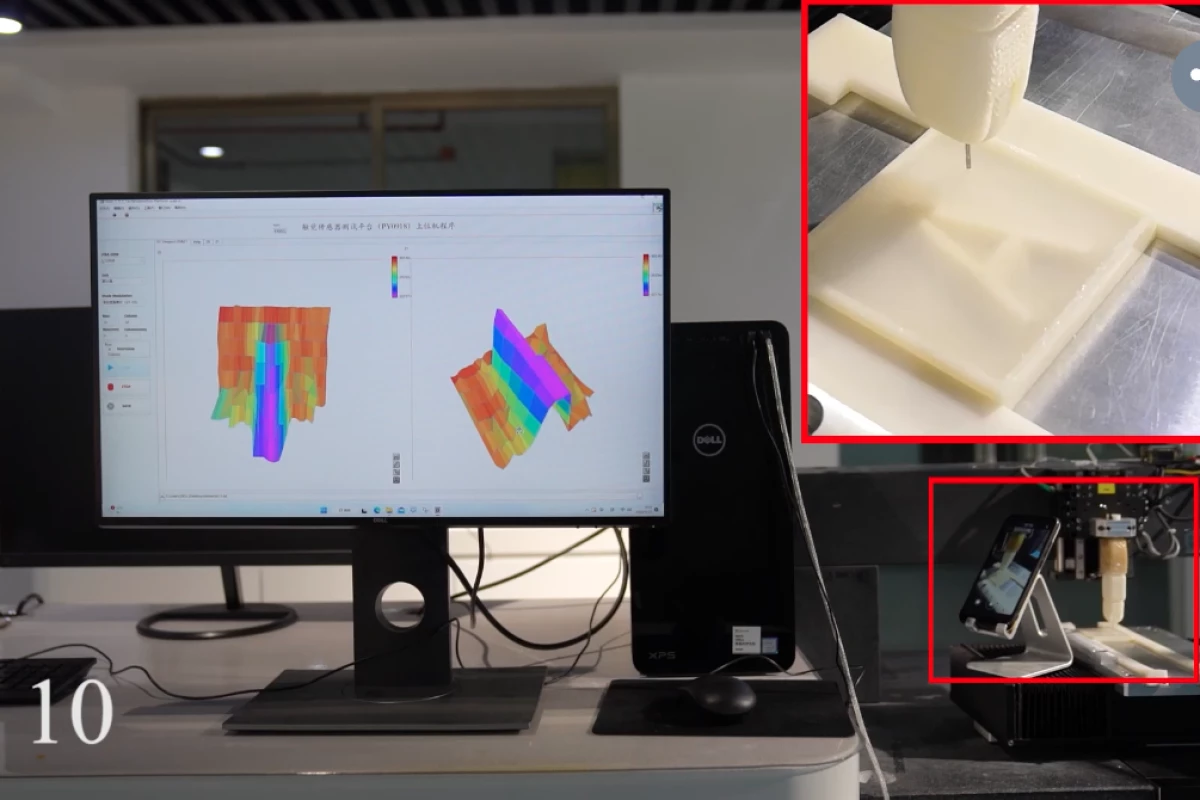The medical community has a lot of ways to see beneath our skin including MRIs, X-rays, and sonograms. Now, researchers at China's Wuyi University have created a robotic finger that may offer another way to analyze our human form – by poking and prodding it. Their bionic finger can detect structures such as the blood vessels, tissues and bones that exist beneath our skin.
"We were inspired by human fingers, which have the most sensitive tactile perception that we know of," said senior author Jianyi Luo, a professor at the university. "For example, when we touch our own bodies with our fingers, we can sense not only the texture of our skin, but also the outline of the bone beneath it."
The bionic finger actually looks more like a tattoo gun than a finger. It works by repeatedly jabbing a surface with a small needle-like tip as it methodically scans back and forth along the area. The tip is made from carbon fibers which compress to a greater or lesser extent as they encounter softer and harder materials.
Based on its own contraction as well as the reaction of the material it is encountering, the bionic finger is thus able to create three-dimensional images of what it touches. Not only is the surface of the material scanned, but the structures beneath are also rendered into 3D. In this regard, it goes one step further than a shape-sensing bionic finger system developed at MIT a few years back, and the BionicSoftHand created before it.
"Our bionic finger goes beyond previous artificial sensors that were only capable of recognizing and discriminating between external shapes, surface textures, and hardness," said study co-author Zhiming Chen, a lecturer at Wuyi University.
In tests, the finger was presented with a variety of structures to map. These included a rigid letter "A" covered with a layer of soft silicone, as well as a variety of other shapes that ranged from soft to hard, also encased in silicone. The finger was not only able to easily map the hard letter "A" shape, but it was also successful in identifying soft shapes beneath soft silicone.
To see how the bionic finger might do in terms of mapping humans, the research team created structures consisting of artificial bones and "muscle" tissue made from silicone. They then found that the touch of the probe was sensitive enough to even find simulated blood vessels embedded in the artificial tissue.
"Similar to the palpation of a doctor, the bionic finger can recognize the simple tissue structures of the human body, but some work remains to be done for the recognition of complex 3D structures," write the researchers. "Significantly, the bionic finger can reconstruct the 3D profile of the tissue structures, making the palpation visual and scientific. Overall, these results show the fantastic prospects for subsurface tactile tomography for application in the human body."
The researchers also believe that the bionic finger system could be useful in finding errors in flexible electronics such as sweat-powered wearable batteries and stretchable display screens. To test out the theory, they passed the finger over a flexible circuit system, and it was successful in finding a mis-drilled hole and an area that had a disconnect which would keep the system from working properly.
"This tactile technology opens up a non-optical way for the nondestructive testing of the human body and flexible electronics," says Luo. "Next, we want to develop the bionic finger’s capacity for omnidirectional detection with different surface materials."
The research was reported in the journal, Cell Reports Physical Science.
Source: Cell Press via EurekAlert





